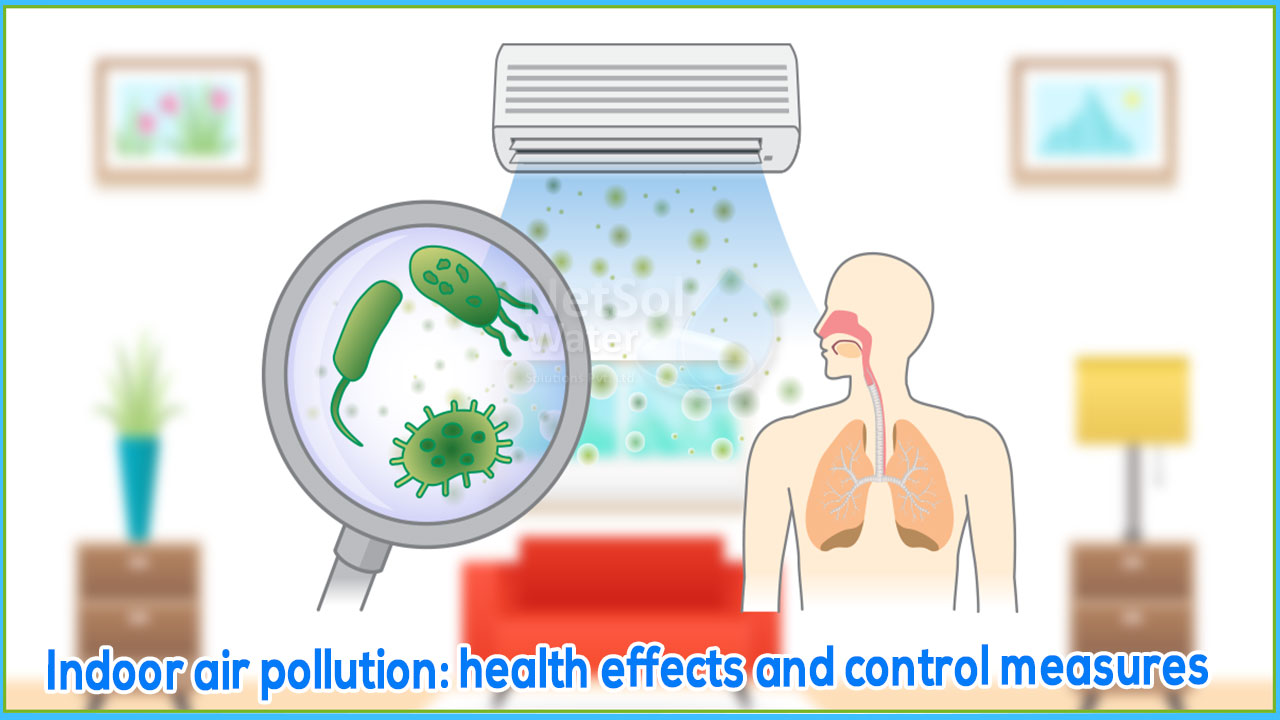Indoor air pollution is the degradation of indoor air quality caused by toxic chemicals and other pollutants, and it can be up to ten times more dangerous than outside air pollution. This is because enclosed locations allow possible contaminants to accumulate more quickly than open spaces. Solid fuel indoor air pollution caused 3.5 million fatalities and 4.5% of global daily-adjusted life years, as well as 16% percent of particulate matter pollution. Though home air pollution from solid fuels has decreased in Southeast Asia, it still ranks third among risk factors in the Global Burden of Disease report.
EFFECTS OF INDOOR AIR POLLUTION ON HEALTH
Indoor air pollution causes approximately 2 million premature deaths each year, 44% of which are caused by pneumonia, 54% by chronic obstructive pulmonary disease (COPD), and 2% by lung cancer. Respiratory disorders such as acute respiratory tract infection and COPD, poor prenatal outcomes such as low birth weight and stillbirth, cancers of the nasopharynx, larynx, and lung, and leukemia are among the morbidities linked to indoor air pollution.
The most affected demographics are:
- Women
- Children
- Old people
As they spend the most time at home.
CONTROL MEASURES
PUBLIC AWARENESS: Education, or raising public awareness about the issue and the substantial damage it poses to people's health and well-being, is one of the most critical measures in preventing indoor air pollution. Education could assist people in identifying various methods for lowering exposures, such as better kitchen management and child protection at home. People should also be trained on how to substitute direct combustion of biomass fuel with alternate, cleaner sources of energy. To assure their commitment and raise their understanding about the health implications of indoor air pollution, stakeholders must include not only the general population, but also legislators and administrators.
CHANGE IN PATTERN OF FUEL USE: Fuel consumption is determined by one's habits, availability, and, most crucially, affordability. Currently, the majority of low-income families rely solely on direct combustion of biomass fuels for their cooking needs because it is the cheapest and most convenient option available to them; however, this could be changed by encouraging the use of cleaner energy sources such as gobar gas, which is made from cow dung.
MODIFICATION OF DESIGN OF COOKING STOVE: Traditional smoky and leaky cooking stoves should be replaced with ones that are fuel efficient, smokeless, and have an exit (e.g., chimney) for indoor pollutants. A good example is the one developed by the Ministry of New and Renewable Energy's National Biomass Cookstoves Initiative as part of a Special Project on Cookstove, with the primary goal of increasing the availability of clean and efficient energy for the country's energy-deficient and poorer sections.
IMPROVEMENT IN VENTILATION: Appropriate ventilation should be prioritized during house building; for poorly ventilated dwellings, measures such as a window above the kitchen range and cross ventilation through doors should be implemented.
GLOBAL INITIATIVE AND INTERSECTORAL COORDINATION: Indoor air pollution can only be managed if several sectors concerned with health, energy, the environment, housing, and rural development work together.
CONCLUSION
Though there is evidence for an increase in indoor air pollution in India and its link to increased morbidity and mortality, more research is needed to assess indoor pollutant exposure levels and strengthen the evidence for their link to outcomes such as tuberculosis, cataracts, asthma, cardiovascular health, and cancers. At the same time, effective interventions, ranging from education to fuel shifts and optimal stove and house design, as well as a committed and resolute intersectoral collaboration to promote public health, are urgently needed.




